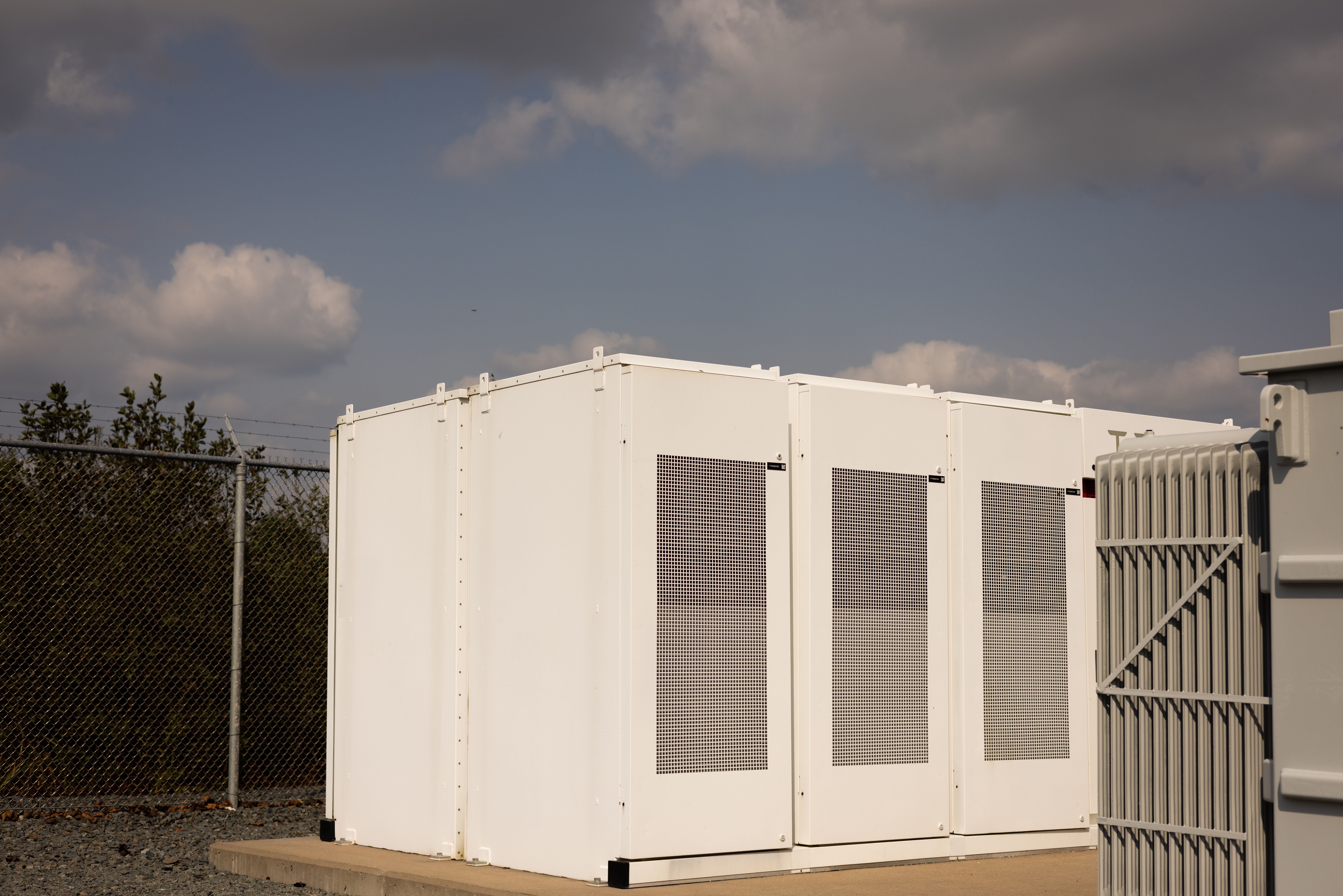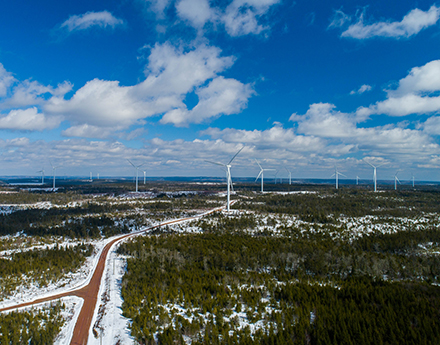Around the world—and here in Nova Scotia—there are conversations about how we use energy and its impact on climate change. By transitioning to renewable energy, we can make a big impact—cutting carbon emissions and building a greener future for all of us.
It’s why we’re on a path to phase out coal and reach 80% renewable energy by 2030. These are targets set by the federal and provincial government, and we’re committed to achieving them together—with our partners, customers, stakeholders, and Mi’kmaq communities.
So how will we get there?
Like any goal worth striving for, there’s a lot to consider. Today, over 40% of the electricity we generate comes from renewable sources. It means we have some challenges ahead and decisions to make over the next 6.5 years to transform how we make and deliver electricity, while ensuring that as our energy gets greener, it stays reliable, too.
What are some of the challenges on the path to 2030?
Coal played an important role in Nova Scotia’s energy history—but we know it can’t be a part of our future. As we phase out coal, we must consider the best options for you, our customers—that will reduce our emissions while balancing costs and continuing to reliably meet your energy needs.
Here in Nova Scotia, we’re fortunate to have plenty of wind—the upside of all our blustery weather! Wind is a low-cost source of clean energy and will play an increasingly critical role in our energy mix. And because the wind doesn’t always blow, we need to ensure we can fill those gaps to make sure that electricity is always there when you need it.
Unlike other provinces like Quebec or BC, we don’t have an abundance of hydro power. It means we need to explore other solutions to support the intermittent nature of wind and reach our 80% renewable target.
How do you decide what our energy future looks like?
When making decisions for our energy future, it’s important that we weigh all the options and make the best possible choices for our customers. And we do that through our Integrated Resource Plan (IRP).
The IRP is a long-term outlook for our electrical system that guides the planning for our energy future. Through the IRP process, we forecast how much energy will be needed by customers over the next 20 years, and we explore the various paths we could take to deliver this energy and reach the climate goals ahead of us. This included gathering input and feedback from over 100 stakeholders, including government, environmental organizations, industry experts, researchers, and customers.
How will we reach 80% renewable energy? What are the options being considered?
While the Integrated Resource Plan considers multiple scenarios, there are some common actions that will enable us to meet our climate goals, while ensuring your electricity stays reliable.
- More wind and solar—we know we’ll need to add significant wind energy to our system, along with more solar power.
- Battery storage—As we add more wind and solar, we also need to be able to shift that energy to periods when the sun isn’t shining, or the wind isn’t blowing. Batteries can help us store renewable energy and bring more of it onto the grid.
- A ‘Reliability Tie’ to New Brunswick—A new transmission line from Nova Scotia to New Brunswick can strengthen our connection to our neighbours, providing a steady, reliable flow of energy as we add more renewables onto our system.
- New fast-acting generation—As our population grows and demand for electricity continues to increase, we’ll need access to reliable fast-acting generation—like natural gas and hydrogen. It’s about ensuring we can generate back-up energy on demand. This is important because it can support our system on days when Nova Scotians are using the most electricity—like during extremely cold winter days.
- Phasing out coal—As we move away from using coal to make electricity, we’ll be making some changes at our coal plants, including our Lingan and Point Tupper Generating Stations in Cape Breton. At Lingan, some existing coal units can already generate power using heavy fuel oil and at Point Tupper, we would convert the facility to operate on natural gas. Since these units wouldn’t be used very often, their annual carbon emissions will be low.
Where does the Atlantic Loop fit in?
There are a number of possibilities under consideration to get us to 80 per cent renewable energy, and the Atlantic Loop is one option. It’s a proposed 1000 KM two-way transmission line that would connect Atlantic Canada to Quebec and the North American Energy Market. A stronger transmission connection is also another way to ensure you have uninterrupted power when the wind isn’t blowing.
What’s next in our clean energy transition?
Finding the right path to 2030 is challenging and complex—but it’s also exciting! This is a journey we’re all on together to build greener communities and make a difference for our province.
We continue to work with both the federal and provincial governments to collaboratively pave the way for a greener future in a way that best manages costs for our customers.
Have a question about our clean energy transition? Reach out to us by visiting nspower.ca/clean.
Learn more about our Path to 2030 and our Integrated Resource Plan in our fact sheet.
Share This Post:





